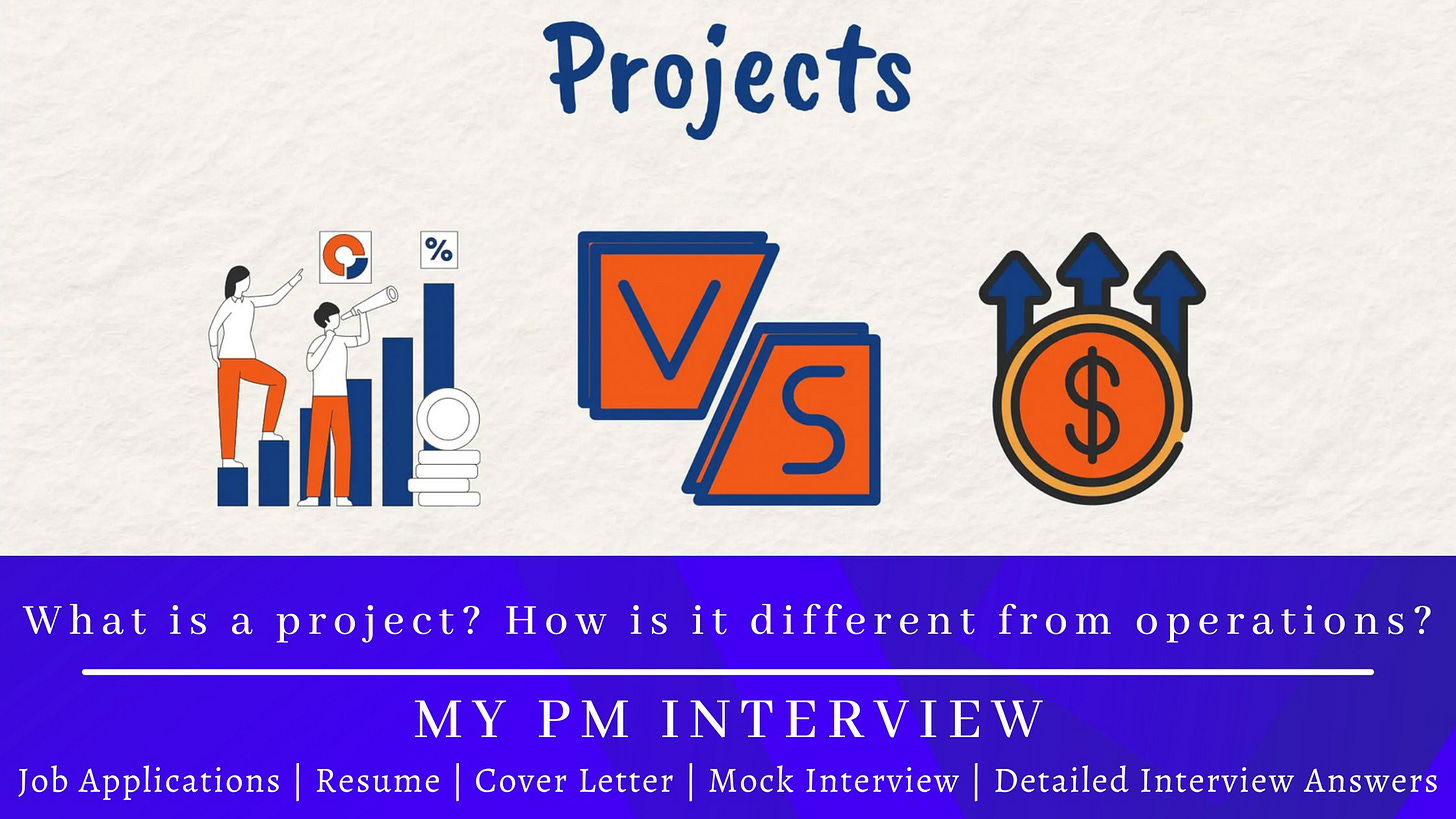What is a project? How is it different from operations? - Google Project Mgmt
Google Project Management Interview Question and Answers - What is a project? How is it different from operations?
Project:
A project is a temporary, unique effort undertaken to create a defined product, service, or result. It has a clear start and end, a scoped set of objectives, constrained resources (time, budget, people), and defined acceptance criteria. Projects are intentionally built to deliver change or achieve a specific outcome that did not exist before.
Operations:
Operations are the ongoing, repetitive activities an organization performs to deliver and sustain products or services. They are focused on stability, efficiency, and continuous performance rather than one-time delivery. Operations typically have steady processes, established roles, and recurring performance metrics.
Fundamental differences
Characteristics of a project
Temporary: Ends when objectives are achieved or when it’s decided to stop.
Unique deliverable: Even if similar to past work, it has distinguishing factors (scope, environment, stakeholders).
Progressive elaboration: Requirements are refined as the project proceeds.
Constraints: Time, cost, scope, and quality form the basis of planning and tradeoffs.
Stakeholders: Multiple stakeholders with different expectations, stakeholder management is critical.
Lifecycle: Initiation → Planning → Execution → Monitoring & Control → Closure.
Characteristics of operations
Ongoing: No planned end date; continuous delivery of services/products.
Process-driven: Standard operating procedures, checklists, automation.
Performance-focused: KPIs like cost-per-transaction, throughput, mean time to repair (MTTR), uptime.
Stable roles: Defined teams, often organized by function (support, production, delivery).
Governance: Driven by service management frameworks (e.g., ITIL in IT) and operational SLAs.
How they interact:
A crucial practical area is how projects hand over to operations:
Design & Build (Project): Project delivers a new product, system, or process.
Transition Plan: Includes documentation, runbooks, training, support model, rollback plan.
Stabilization Period: Operations may run alongside project team for a short period (hypercare).
Full Handover: Ownership, budget, and performance SLAs transfer to operations.
Benefits Realization: Operations and business measure whether project produced expected benefits.
Poor handoffs are a common reason projects fail to deliver sustained value.



